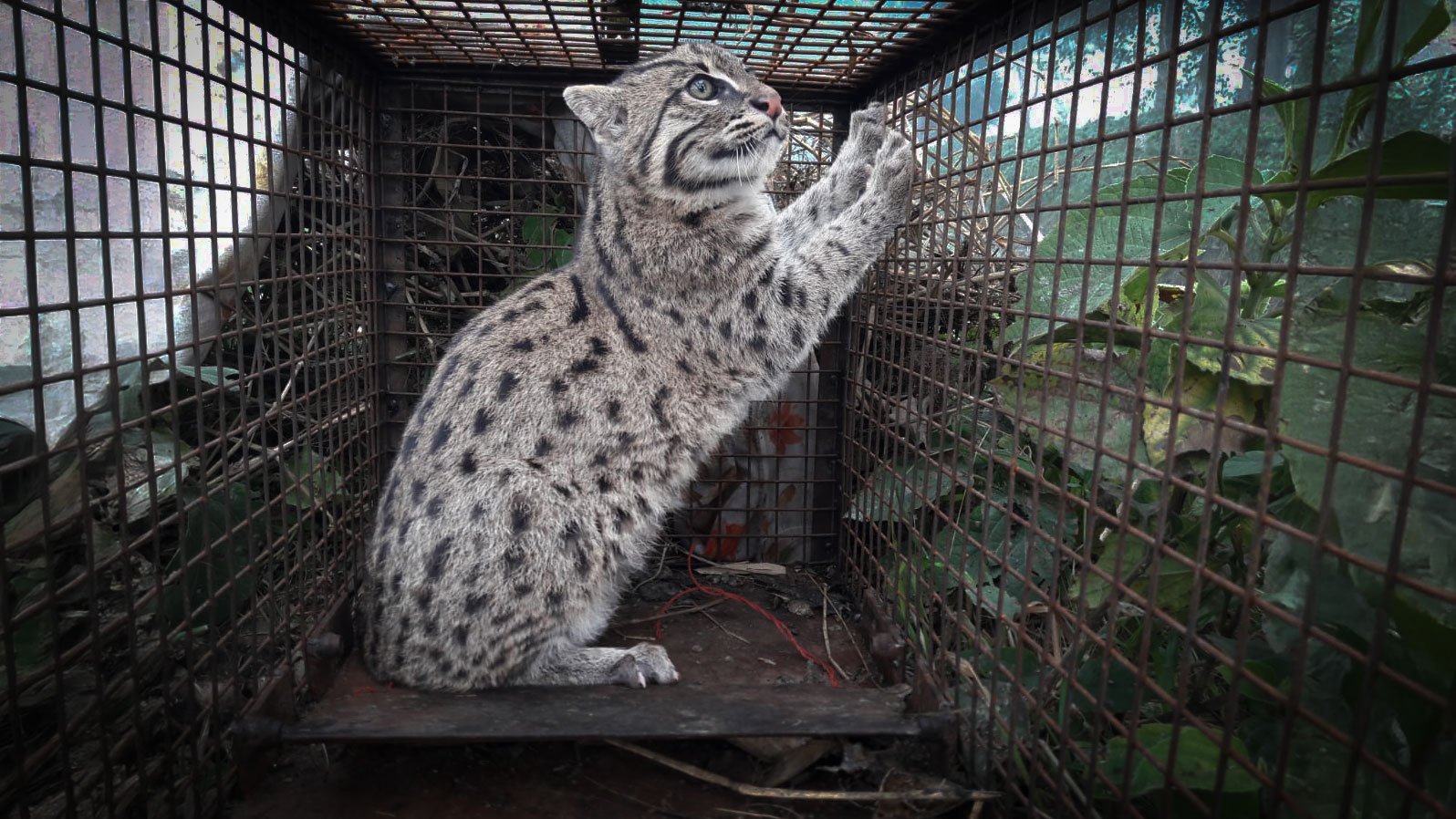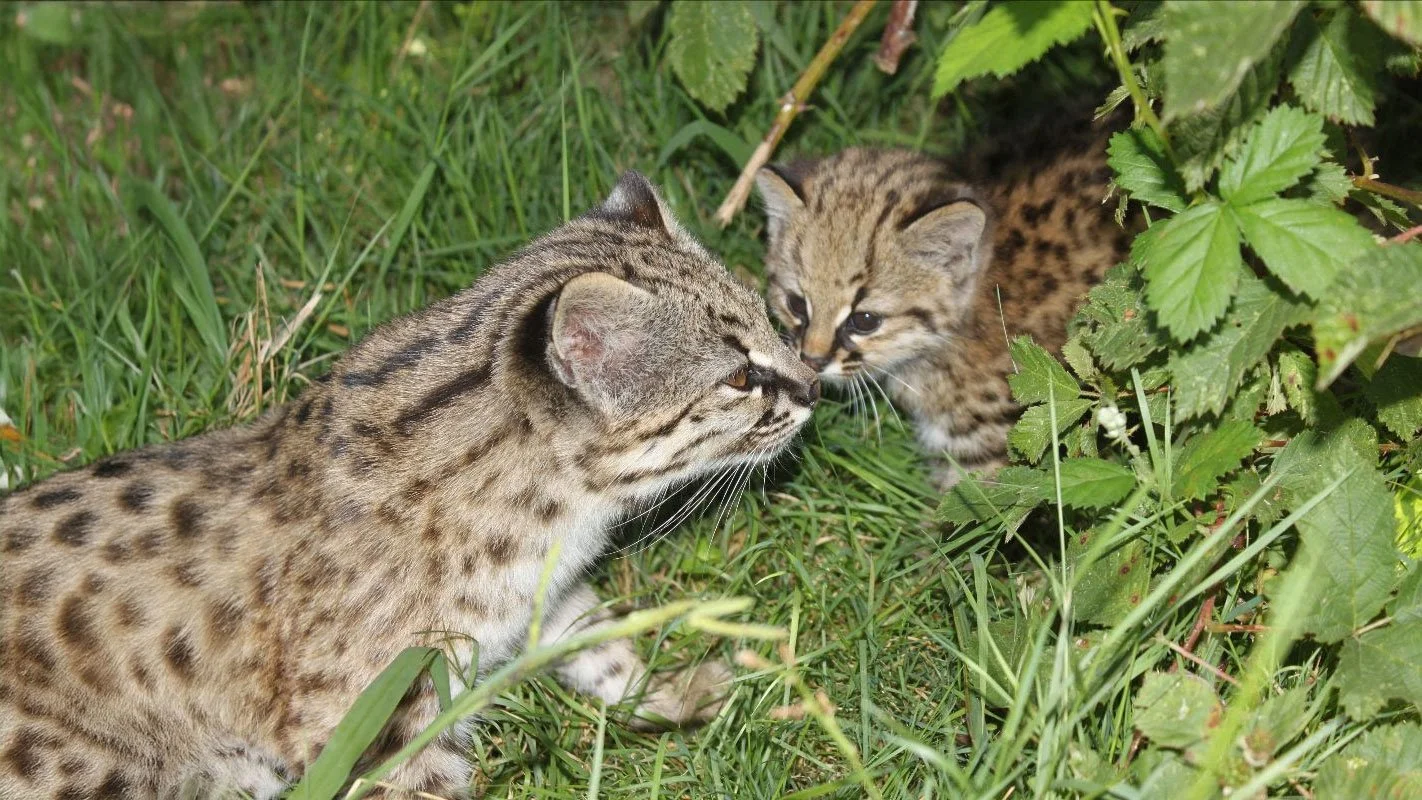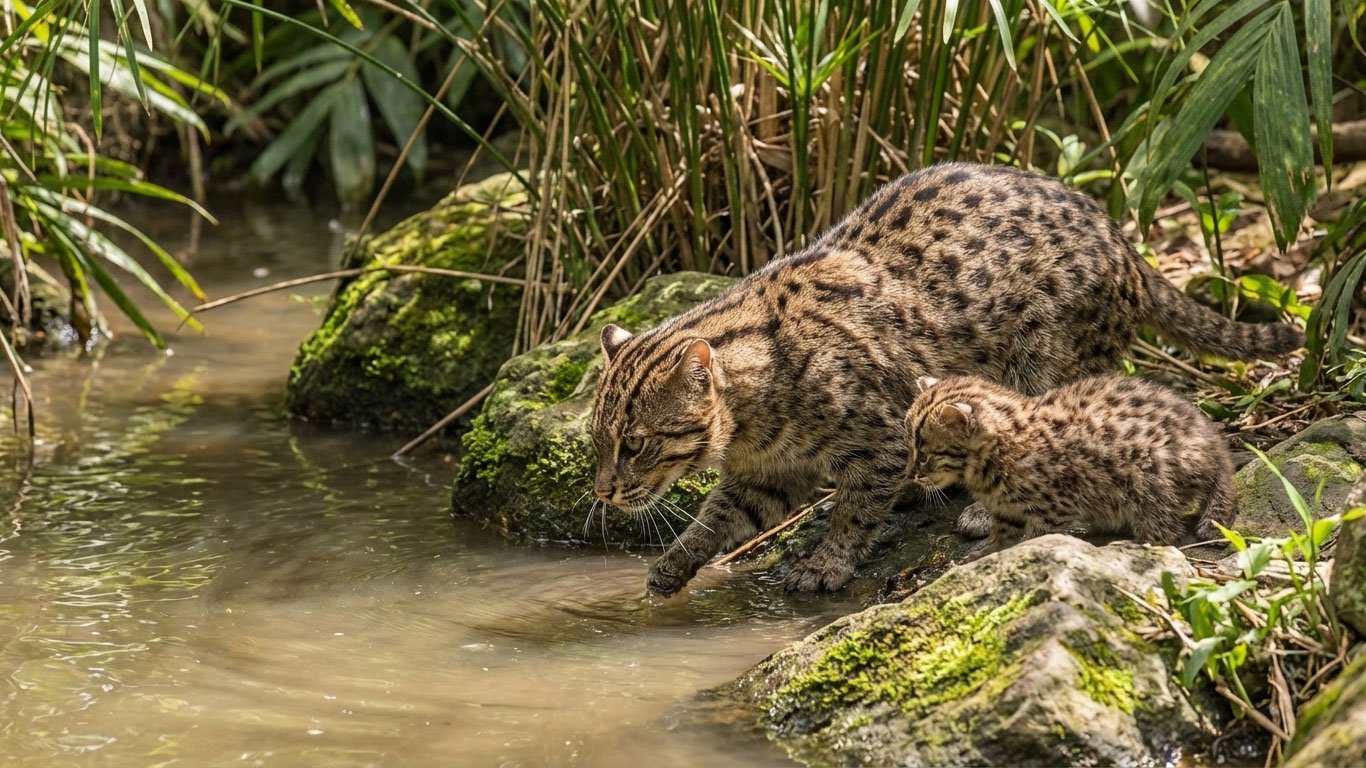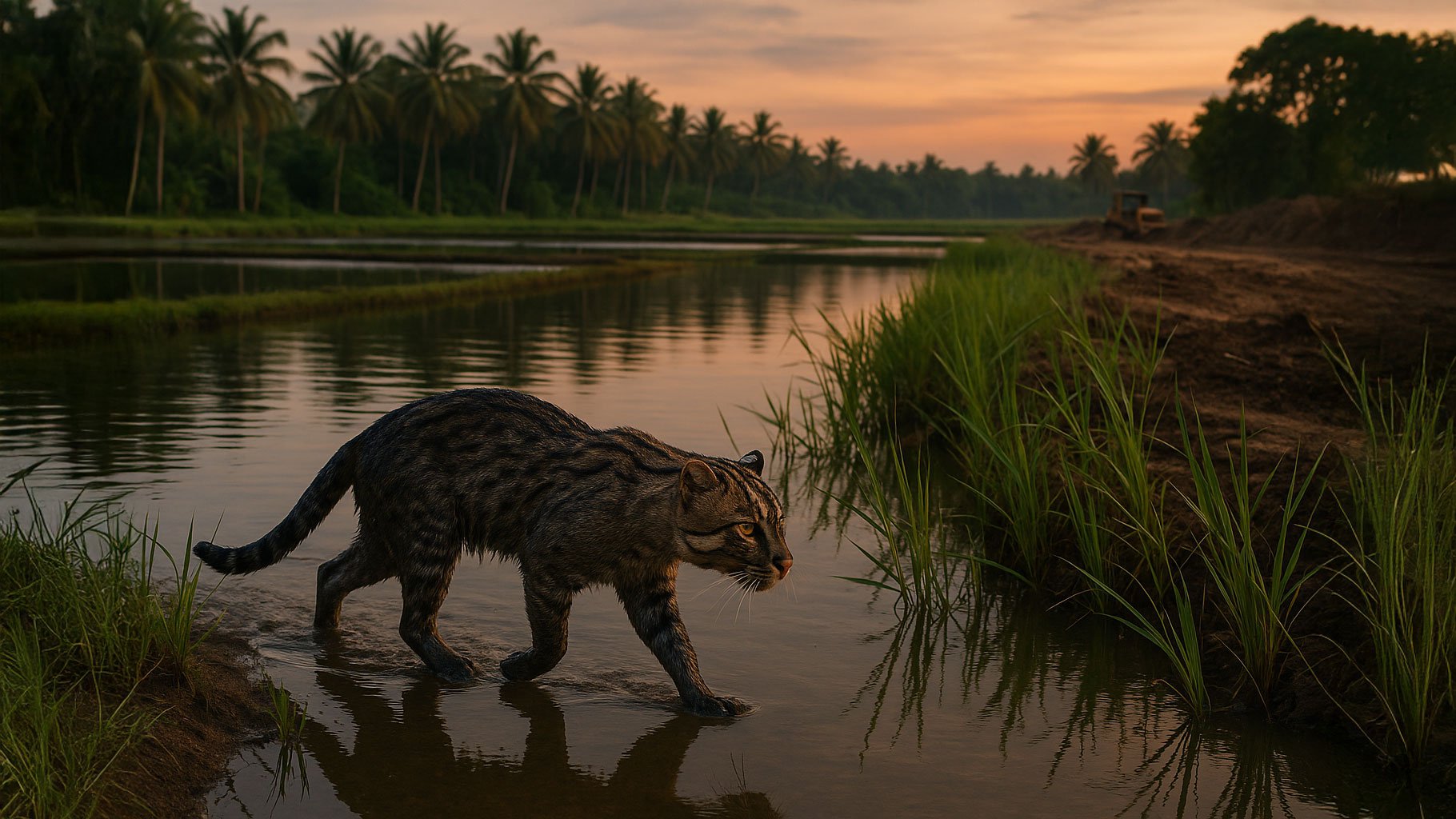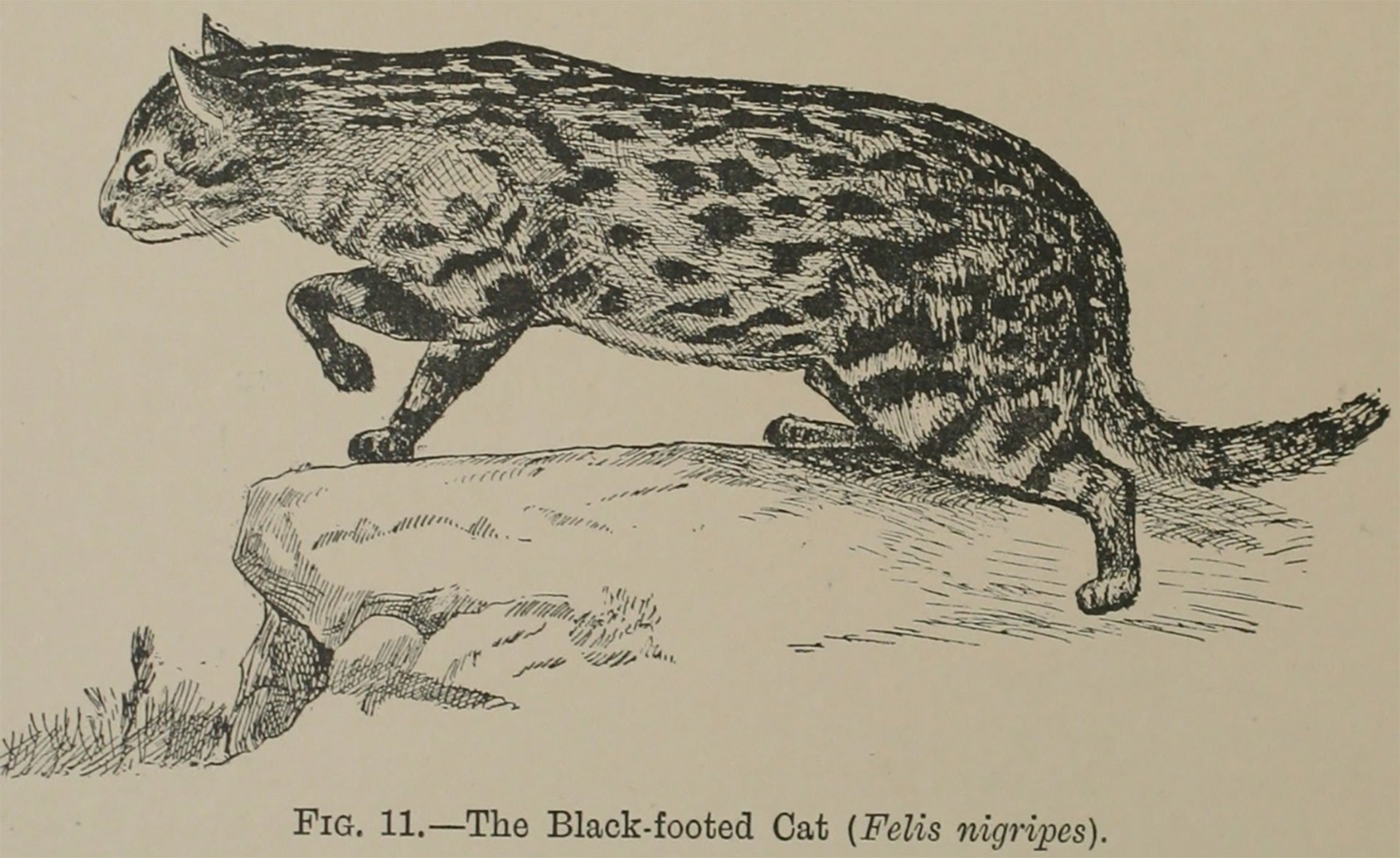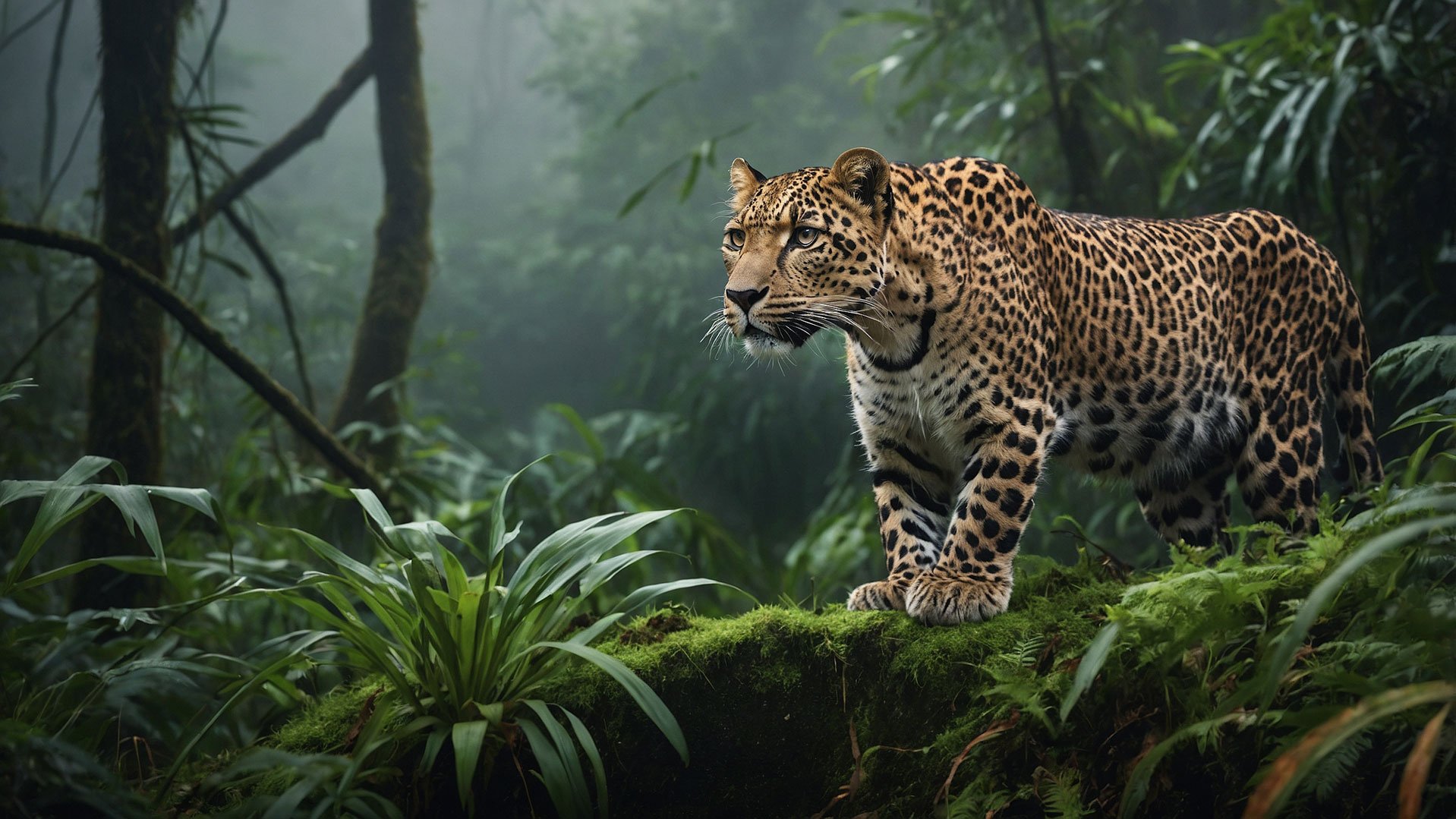Wilderness Nomads: The Secret Lives of Nepal’s Fishing Cats Revealed
In the hush of Nepal’s wetlands, where tall grasses shimmer in the breeze and waterways crisscross emerald fields, lives a cat most people never see. Not because it is so rare, though it is, but because it has mastered the art of vanishing into the landscape. Meet the fishing cat—an elusive feline that stalks the margins of swamps and streams with the stealth of a shadow and the silence of a ghost.
For years, conservationists believed these small wild cats led relatively contained lives, sticking close to rivers and reed beds in protected areas. But a groundbreaking study led by researcher Rama Mishra has rewritten that narrative. With the help of GPS collars and an extraordinary effort in the Koshi Tappu Wildlife Reserve in southeastern Nepal, the mystery of the fishing cat’s range and resilience is finally coming into focus.
What they found surprised even seasoned field biologists.
Far-Ranging Travelers in a Fragmented World
Mishra and her team tracked 11 fishing cats—six females and five males—between August 2021 and January 2023. Using GPS satellite collars, they documented how far these cats actually travel. Prior studies had pegged male home ranges at around 8 to 22 square kilometers. But the Nepal study revealed astonishing numbers: an average of nearly 40 km² (15.4 mi²) per cat using the advanced AKDE method. That’s about the size of Manhattan.
And what’s more, these cats weren’t just prowling inside protected areas.
They were living among us.
Contrary to local belief that fishing cats only sneak into villages under the cover of night, the data showed several individuals living full-time in human-dominated landscapes—agricultural fields, fish ponds, and even near villages. Some preferred these mosaic habitats over protected zones altogether. Their reason? Prey.
In the fish-rich artificial ponds and rodent-filled fields outside the reserve, meals were more predictable. Inside Koshi Tappu, human overfishing had driven fish numbers dangerously low. As prey density drops, the cats must wander farther in search of food—often into conflict zones with humans who fear them or mistakenly believe they eat only fish.
Misunderstood and Vulnerable
The fishing cat (Prionailurus viverrinus) is officially listed as “Vulnerable” by the IUCN. It haunts the wetlands of South and Southeast Asia—Nepal, India, Sri Lanka, Myanmar, and a handful of other countries—but its habitat is disappearing fast. Urban sprawl, shrimp farms, deforestation, and wetland destruction have carved up its native range into dangerous puzzle pieces.
Complicating matters is the cat’s reputation. Local communities often blame them for raiding fish ponds, seeing them as nuisances rather than the rodent-controlling, ecologically vital species they are. This bias leads to retaliatory killings and inflated population estimates, since a single cat seen in multiple places may be mistaken for many.
But GPS tracking has exposed this illusion.
One cat can travel vast distances, sometimes being spotted by people miles apart who each believe it’s a different animal. The study revealed that what might appear to be a healthy population is often a single traveler weaving its solitary route through fields, marshes, and backyards.
The Road Ahead
Mishra’s research is more than just data points and dotted maps. It’s a wake-up call—a clear message that fishing cats need more than just protected areas to survive. They need coexistence. And that can only happen if we change how we see them.
“These cats are not just fish eaters,” Mishra says. “They play a role in pest control, help keep ecosystems balanced, and are indicators of wetland health.”
Engaging communities is now paramount. If locals understand that fishing cats also help reduce rodent populations and are far fewer in number than they imagine, the chances of peaceful coexistence improve dramatically.
“This study can be a baseline for future research,” Mishra adds. “And a tool for smarter, more inclusive conservation.”
What You Can Do
Wild cats like the fishing cat are vital threads in the ecological fabric. Their survival signals the health of wetlands, which in turn support birds, fish, and human communities. Protecting them protects us all.
Here’s how you can help:
Support conservation groups like the Fishing Cat Conservation Alliance at https://fishingcat.org.
Advocate for wetland preservation in your region and globally.
Share the story of the fishing cat to dispel myths and spark appreciation.
Donate to organizations like Big Cat Rescue, a funder of the Fishing Cat Conservation Alliance, that work to safeguard wild cats where they belong—in the wild.
Because sometimes, the smallest felines have the biggest ranges. And the biggest impacts.
Read more: https://news.mongabay.com/2025/03/fishing-cat-home-range-far-bigger-than-previously-thought-nepal-study-suggests/
